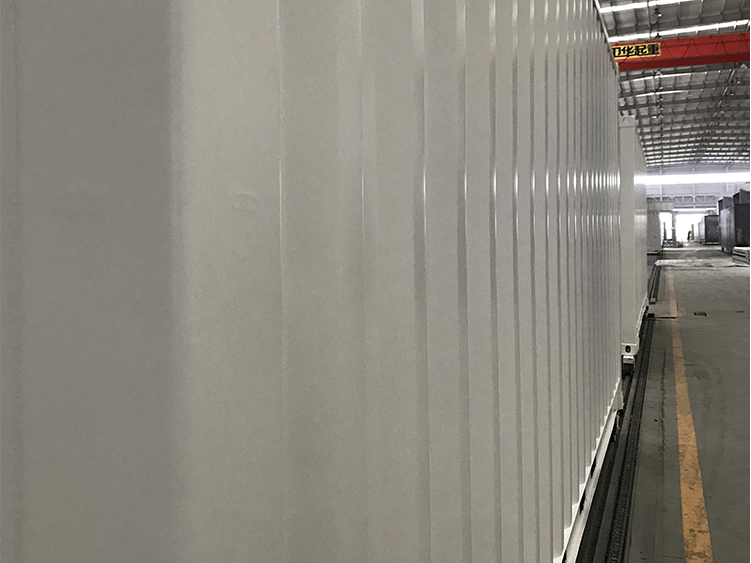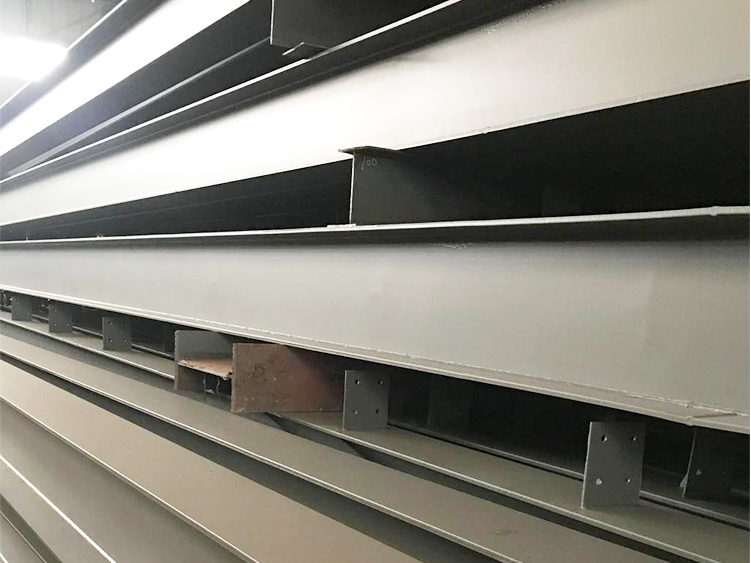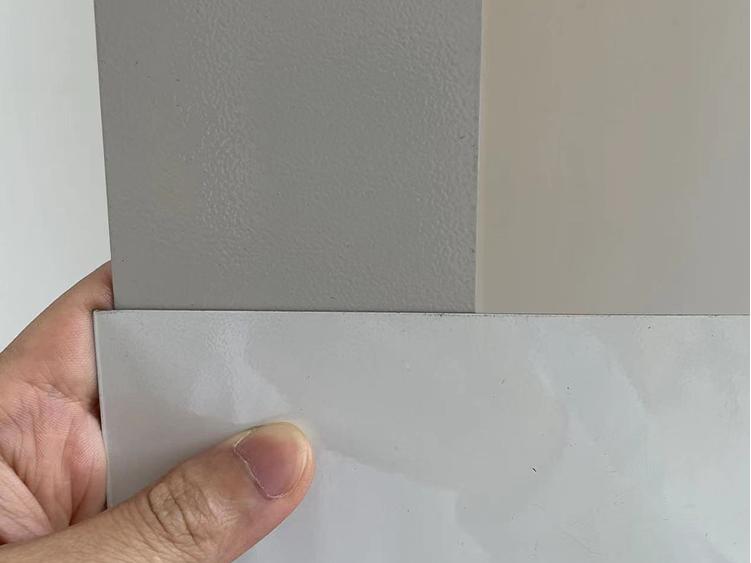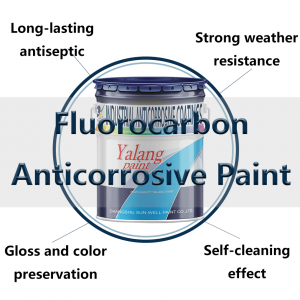
Corrosion Protection Master: How to Choose the Right Epoxy Primer for You?
In the realm of corrosion protection, epoxy primers are renowned for their robust anti-corrosion and rust-prevention properties, earning them the

In our construction processes, we frequently encounter issues with paint film gloss loss, especially in two-component systems, which can be quite troubling for many engineers. In this issue, we’ll analyze the reasons for gloss loss in paint films from a theoretical perspective and provide some solutions.

Gloss loss refers to the reduction in glossiness after the clear coat dries, resulting in decreased appearance brightness. The paint film surface appears with tiny, dense pinholes, resembling what is commonly known as “milia” or “pimples.” Unlike conventional pinholes, which are only surface indentations and do not reach the underlying layers, gloss loss affects the overall appearance, giving it a whitish look.
The quality of the paint film can be assessed by its gloss level, which is typically lower than the normal value, and the appearance brightness data (DOI value) is significantly lower than usual. While gloss loss can be detected by visual inspection or instrument testing, it should not be solely characterized by gloss level; the paint film’s appearance brightness (DOI value) should also be considered.
Appearance brightness refers to the clarity with which the coating’s surface reflects images or projections. It is a comprehensive reflection of the paint film’s gloss, wetting, and smoothness. Although gloss is an important factor in appearance brightness, they are not highly dependent on each other.

The gloss of a paint film is related to its surface smoothness. Any gloss loss occurs because the surface is uneven, causing excessive light diffusion and a loss of image clarity. Factors affecting paint film smoothness include the fineness of the paint, spraying techniques, and other aspects. Additionally, gloss loss on-site is mainly caused by production control, spraying techniques, and spraying equipment.
From the perspective of the paint itself, the particle size of the pigments and their dispersion in the base material affect the gloss of the paint film. Finer pigments and better dispersion in the base material contribute to a smoother and more even paint film.
Moreover, the pigment volume concentration (PVC) in the paint affects gloss. Higher PVC levels reduce gloss because pigment particles weaken mirror reflection. As the pigment volume increases, gloss gradually decreases. At a fixed pigment volume ratio, a higher oil absorption rate of the pigments results in lower gloss.
The type of solvent used in the paint directly impacts its evaporation rate. Either too fast or too slow evaporation can affect the paint film’s smoothness and reduce gloss.
From the perspective of spraying techniques, the mechanism of gloss loss in paint films should be studied starting from the formation of the paint film. Taking waterborne baking paint as an example, after applying waterborne paint, most of the water in the coating evaporates during the pre-drying process and dries along with the clear coat. The resin and hardener form the paint film through a cross-linking reaction. If the color coat is inadequately pre-dried, residual moisture can form tiny pinholes between the two layers during drying, which reduces the clarity of reflections within the paint film and results in gloss loss on the surface. This phenomenon is similar to gloss loss caused by a perspective effect. It is evident that gloss loss often occurs alongside other paint film defects.

(1) Rough and Uneven Substrate Surface:Often caused by insufficient sanding of the substrate.
-Solution: Choose sandpaper with the appropriate grit and sand according to the specified direction.
(2) Fast Evaporation Rate of Thinner or Poor Quality Thinner:Using a thinner with a too-fast evaporation rate or of poor quality.
-Solution:Use a thinner recommended by the paint manufacturer, considering environmental temperature changes.
(3) Incompatible Hardener or Thinner: Using a hardener or thinner that is not compatible with the paint.
-Solution:Use recommended compatible materials and avoid mixing products from different brands.
(4) Poor Atomization or Adjustment of Spray Gun: Insufficient paint flow, incorrect air pressure, or overly wide spray pattern can cause abnormal drying and gloss loss.
-Solution: Readjust the spray gun.
(5) Abnormal Application Environment: Typically caused by excessive airflow, high humidity, or high substrate temperature in the spray environment.
-Solution: Improve ventilation conditions and avoid painting on substrates with excessively high temperatures.
(6) Excessive Primer Thickness: Excessive primer application can cause gloss loss in 2K clear coats.
-Solution:Control the primer film thickness while ensuring adequate coverage.
(7) Moisture-Damaged Hardener: This often results in the appearance of “pinholes” or “milia” on the paint surface.
-Solution:Always tightly seal hardener containers and store them in a dry place.
(1) Incorrect Mixing Ratio:Excessive thinner results in a significantly lower viscosity, preventing proper film formation and causing a thickness below requirements.
-Solution: Ensure proper mixing ratios.
(2) Primer or Base Coat Absorption: The primer or base coat might absorb the topcoat.
-Solution: Use qualified primers.
(3) Excessive Baking Temperature or Time: Baking at temperatures above the recommended limits or for too long (over 1.5 hours) can cause gloss loss.
-Solution:Follow the heating instructions provided.
(4) Rapid Temperature Increase:Sudden temperature increases during drying.
-Solution: Allow a 10-15 minute flash-off time.
(1) Polishing Before the Recommended Time: Polishing too soon after spraying.
-Solution: Follow the recommended polishing times for various paints. Generally, for low-temperature 2K paints: 48 hours at 23°C or 30 minutes at 60°C, then let it sit for 8 hours.
(2) Incomplete Drying:If the paint does not cure properly within the normal drying time, possibly due to water or other reactive substances in the thinner, insufficient hardener, or ineffective hardener.
-Solution: Use compatible paints and hardeners in the correct proportions and ensure proper storage of hardeners.
(3) Exposure to Harsh Conditions: Paint exposed to intense sunlight, long-term sun exposure, rain, frost, snow, or temperature fluctuations. Using paints with poor weather resistance outdoors can cause gloss loss and chalking.
-Solution:Most gloss loss can be restored through light polishing. If cracking is present, the entire area needs to be sanded and repainted.

In summary, gloss loss in paint films can result from various factors related to the paint, application techniques, and equipment. When encountering paint defects, it is essential to carefully analyze and consider these influencing factors to promptly address the issue, minimize adverse effects on production, and implement preventive measures in daily work to continuously produce better products.
Note: The above content is compiled from online sources. If there are any copyright infringements, please contact us for removal!

As the source manufacturer, Jiangsu Zhongke Sunwell Technology Co, Ltd. have spent 30 years doing a good job in every barrel of paint, and providing industry supporting solutions for free.
Have questions?Reach out to us, and we will provide you with a perfect solution.

In the realm of corrosion protection, epoxy primers are renowned for their robust anti-corrosion and rust-prevention properties, earning them the

As a member of the epoxy paint family, it is one of the most familiar epoxy products, which is widely

Look closely at the three major types of fluorocarbon coating on the market! Fluorocarbon paint generally refers to fluorocarbon paint,


2024 © YaLang All Rights Reserved

Download our catalog to check all of our products and data sheet, select the right coatings for your projects.